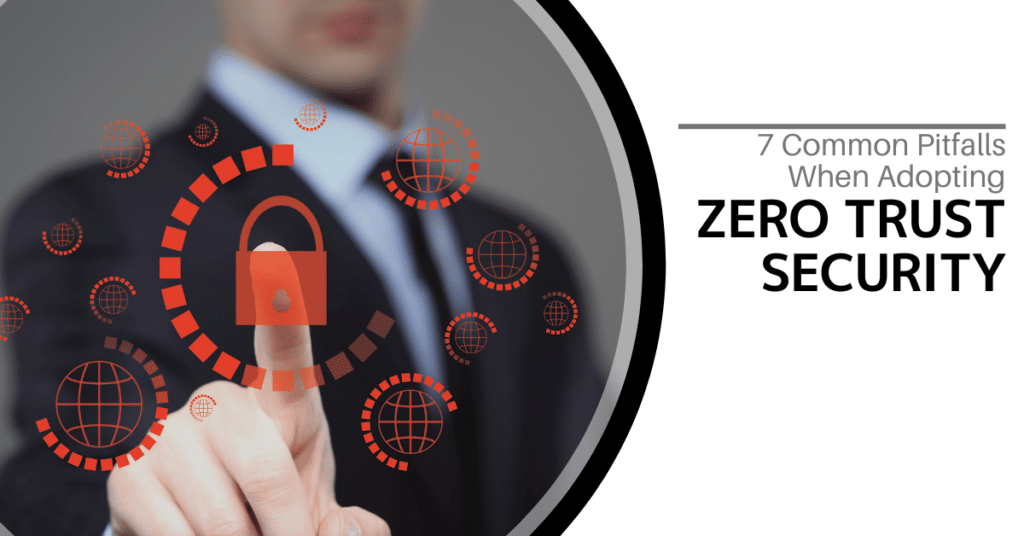|
Getting your Trinity Audio player ready...
|

The cybersecurity landscape is undergoing a significant transformation with the adoption of Zero Trust security models (ZTA). Unlike traditional perimeter-based security methods, Zero Trust operates on the principle that every access attempt must be continuously validated, regardless of whether the request comes from within or outside the network.
A recent survey indicates that 56% of organizations worldwide consider implementing Zero Trust as a “Top” or “High” priority. While the benefits of this approach are substantial, the transition can be fraught with challenges that could undermine a company’s cybersecurity efforts. This article outlines common pitfalls and provides guidance for successfully adopting Zero Trust security.
Understanding Zero Trust Security
ZTA abandons the conventional “castle and moat” model, where users within the network are trusted by default. Instead, it treats every user and device as a potential threat, enforcing a strict “verify first, access later” policy. This approach is built on several key principles:
- Least Privilege Access: Users are granted access only to the resources necessary for their tasks, minimizing potential security risks.
- Continuous Verification: Authentication is not a one-time event. Users and devices are regularly reassessed to ensure they maintain the proper access rights.
- Micro-Segmentation: The network is divided into smaller, isolated segments, reducing the impact of a potential breach.
Common Mistakes in Adoption
Adopting ZTA is not as simple as purchasing a product; it requires a strategic shift within the organization. Here are some common mistakes to avoid:
Mistaking Zero Trust for a Product
ZTA is not a standalone product but a comprehensive security philosophy that necessitates a cultural change. It involves integrating various tools and strategies, such as multi-factor authentication (MFA) and advanced threat detection, to build a robust security framework.
Focusing Solely on Technical Solutions
While technology is crucial, the success of ZTA also depends on the organization’s people and processes. It’s essential to train employees on the new security protocols and update access control policies. The human factor plays a critical role in any cybersecurity strategy.
Overcomplicating the Implementation
Attempting to implement all aspects of ZTA at once can be overwhelming, especially for smaller organizations. Start with a pilot project targeting critical areas and expand gradually.
Neglecting User Experience
ZTA should not overly inconvenience legitimate users. For instance, poorly implemented MFA can frustrate employees. Strive for a balance between robust security measures and a smooth user experience. Effective change management can help ease the transition.
Overlooking Inventory Management
A comprehensive inventory of all devices, users, and applications is crucial before deploying ZTA. This inventory helps identify potential access risks and prioritize security measures.
Ignoring Legacy Systems
Older systems often present significant security vulnerabilities. Ensure that these legacy systems are integrated into your Zero Trust framework or plan for their secure migration.
Overlooking Third-Party Access
Third-party vendors can be a weak link in security. Establish clear access controls and monitor their activities within your network. Implement time-limited access where appropriate.
The Ongoing Journey
Building a ZTA environment is a continuous process that requires time and effort. Here’s how to maintain progress:
- Set Realistic Goals: Achieving Zero Trust is a gradual process. Set attainable milestones and celebrate your achievements along the way.
- Continuous Monitoring: As cyber threats evolve, so should your security measures. Regularly monitor and adjust your Zero Trust strategy.
- Employee Training: Ongoing security awareness training is essential to keep employees engaged and informed about the latest threats.
The Benefits of Zero Trust Security
By avoiding common pitfalls and taking a strategic approach, organizations can reap significant benefits from Zero Trust, including:
- Enhanced Data Security: By restricting access to sensitive data, Zero Trust minimizes the impact of potential breaches.
- Improved User Experience: Properly managed access controls can enhance the user experience for authorized personnel.
- Regulatory Compliance: Zero Trust aligns with many regulatory requirements, helping organizations meet compliance standards.
Take the First Step Toward Zero Trust
Are you ready to begin your journey toward Zero Trust security? Equip yourself with the right knowledge, plan your approach carefully, and steer clear of common mistakes. This will not only strengthen your security posture but also help you build a more resilient business in the face of ever-evolving cyber threats.
Schedule a Zero Trust Cybersecurity Assessment
Zero Trust is rapidly becoming a global security standard. Our team of cybersecurity experts is here to help you navigate this complex journey. Contact us today to schedule a cybersecurity assessment and take the first step toward a more secure future.
Twintel has grown into an expansive, full team of IT services professionals, acting as the outsourced IT department of non-profits, small to mid-size businesses, and enterprise-level corporations in Orange County, across California, and nationally.
Today, it’s the strength and deep expertise of the Twintel team that drives positive outcomes for clients. Each of the support staff, technicians, and engineers works diligently each day to make sure that the companies served have the seamless, secure, and stable IT environments needed to allow them to pursue their organizational objectives.